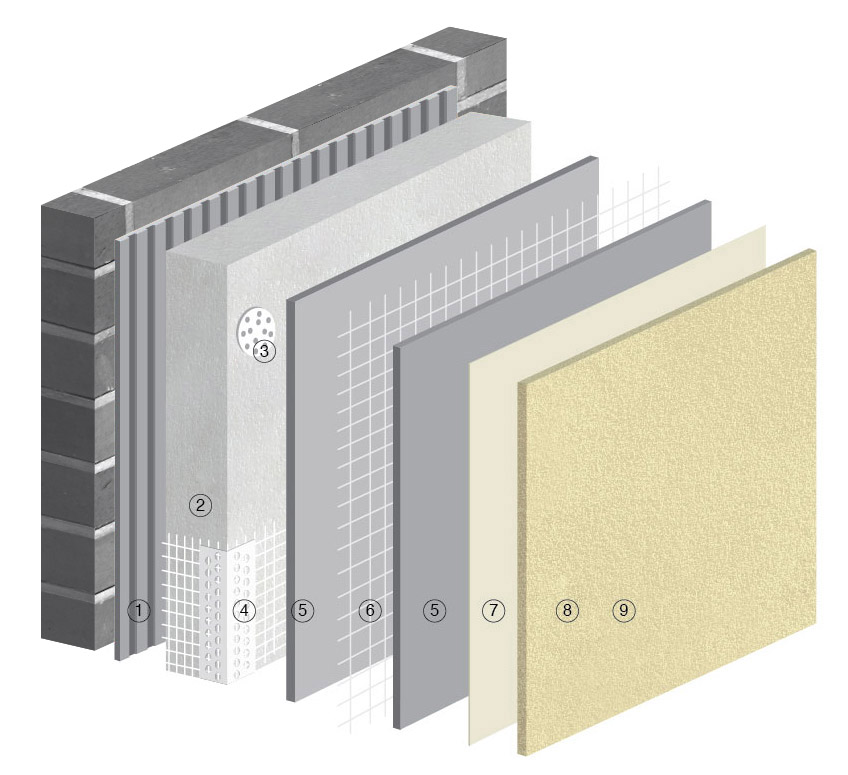Introduction:
When it comes to constructing or renovating buildings, energy efficiency is a top priority. One innovative solution that has gained popularity in recent years is EIFS (Exterior Insulation and Finish System). EIFS is a versatile cladding system that offers numerous benefits, particularly in terms of energy efficiency. In this blog, we will explore the various advantages of EIFS and how it contributes to creating more energy-efficient buildings.
1. Superior Insulation Properties:
EIFS is renowned for its exceptional insulation capabilities. The system consists of multiple layers, including an insulation board that is applied to the exterior walls of a building. This insulation layer effectively reduces thermal bridging, minimizing heat transfer between the interior and exterior of the structure. As a result, EIFS helps maintain a consistent indoor temperature, reducing the reliance on heating and cooling systems and lowering energy consumption.
2. Enhanced Thermal Performance:
With its high R-value (a measure of thermal resistance), EIFS significantly improves the thermal performance of a building. The insulation layer acts as a barrier against outside temperature fluctuations, preventing heat loss in winter and heat gain in summer. By creating a more stable indoor environment, EIFS reduces the need for excessive heating or cooling, leading to substantial energy savings and lower utility bills.
3. Air Infiltration Reduction:
EIFS also plays a crucial role in reducing air infiltration, which is the leakage of air through cracks and gaps in a building's envelope. The seamless and continuous nature of the EIFS system minimizes the opportunities for air leakage, enhancing the building's overall airtightness. This reduced air infiltration helps maintain a controlled indoor environment, prevents drafts, and further contributes to energy efficiency by reducing the workload on HVAC systems.
4. Thermal Mass Effect:
In addition to its insulation properties, EIFS offers a thermal mass effect. The insulation layer helps regulate the temperature of the building's exterior walls, reducing thermal swings. This thermal inertia moderates the rate of heat transfer between the interior and exterior of the structure, resulting in reduced energy requirements for temperature control. The thermal mass effect of EIFS is particularly beneficial in climates with significant diurnal temperature variations.
5. Condensation Prevention:
Condensation can lead to moisture-related problems within buildings, such as mold growth, structural damage, and reduced indoor air quality. EIFS acts as a moisture barrier, preventing the condensation of water vapor on the interior surfaces of walls. The insulation layer keeps the interior walls warmer, reducing the likelihood of condensation formation and mitigating potential moisture-related issues. This moisture resistance contributes to the long-term durability and sustainability of the building.
6. Design Flexibility:
EIFS offers architects and designers immense flexibility in terms of aesthetics. The system is available in a wide range of colors, textures, and finishes, allowing for creative expression and customization to match any architectural style. By combining energy efficiency with design versatility, EIFS offers an attractive solution for both residential and commercial buildings.
Conclusion:
EIFS has emerged as an excellent choice for enhancing the energy efficiency of buildings. With its superior insulation properties, reduced air infiltration, thermal mass effect, condensation prevention, and design flexibility, EIFS contributes to significant energy savings, improved occupant comfort, and reduced environmental impact. When considering construction or renovation projects, it is essential to explore the benefits of EIFS and its potential to create more energy-efficient and sustainable buildings.

 Call Back
Call Back